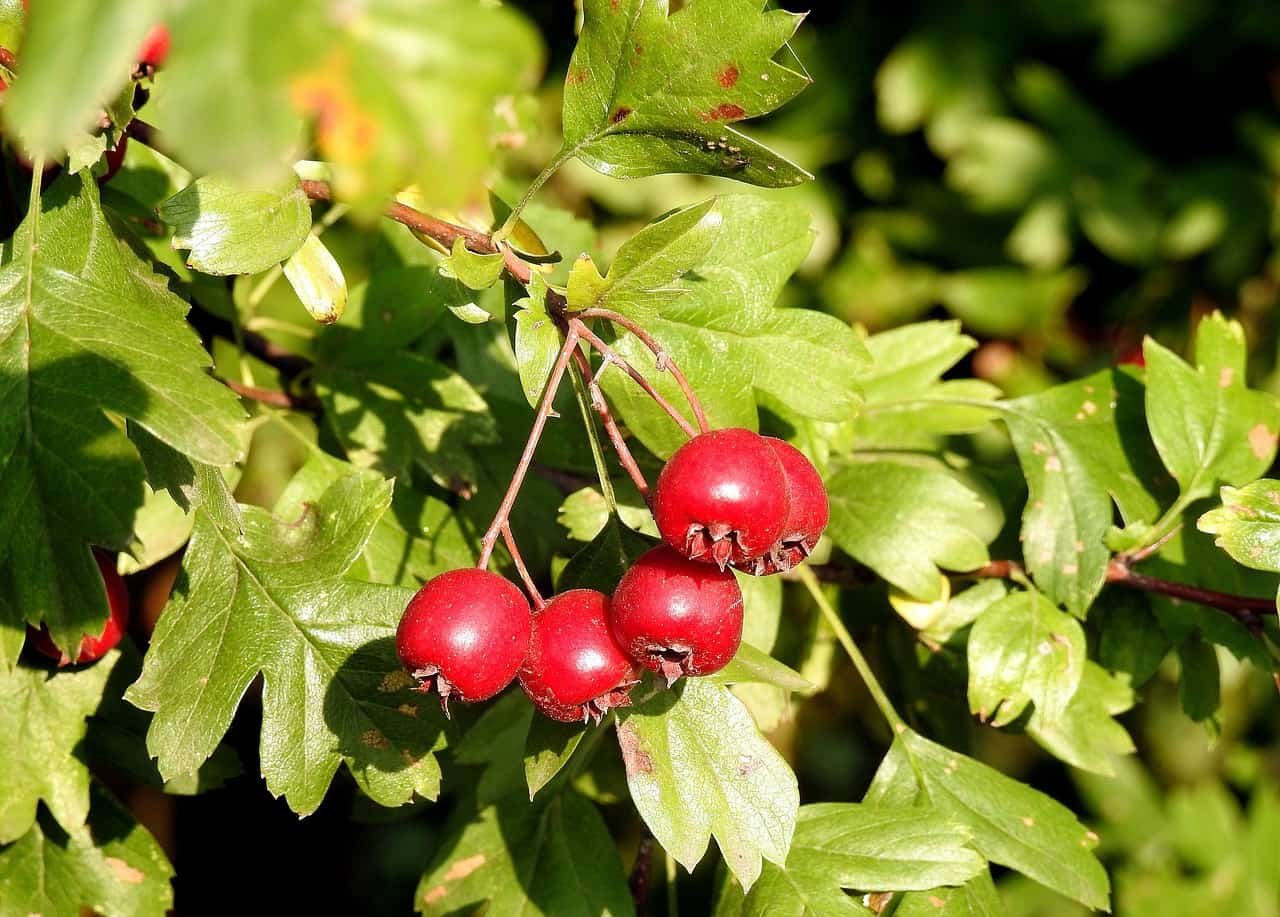Washington Hawthorn
Crataegus is a large genus, full of centuries’ old lore and ritual, notoriously hard to differentiate and with native species in several continents. Washington hawthorn (Crataegus phaenopyrum), however, is native to the southeast USA. It is a showy yet defensive small tree, armed with thorns yet producing beautiful clusters of white flowers, nice autumn foliage and bright red berries with many health and medicinal benefits that hang on the tree through winter.
Growing conditions: Adaptable to a wide range of soil conditions, although well-drained is important. Grow in full sun for best fruit set. Tolerates pruning well and has been a primary hedge species throughout history.
Size at maturity: 25-30’
Uses: The berries are considered to be one of the best heart tonics, as well as a powerful antioxidant. Coincidentally, wildlife also love the berries. Hawthorn is an important nectar tree for bees.
USDA Plant Hardiness Zone: 3-8
Crataegus is a large genus, full of centuries’ old lore and ritual, notoriously hard to differentiate and with native species in several continents. Washington hawthorn (Crataegus phaenopyrum), however, is native to the southeast USA. It is a showy yet defensive small tree, armed with thorns yet producing beautiful clusters of white flowers, nice autumn foliage and bright red berries with many health and medicinal benefits that hang on the tree through winter.
Growing conditions: Adaptable to a wide range of soil conditions, although well-drained is important. Grow in full sun for best fruit set. Tolerates pruning well and has been a primary hedge species throughout history.
Size at maturity: 25-30’
Uses: The berries are considered to be one of the best heart tonics, as well as a powerful antioxidant. Coincidentally, wildlife also love the berries. Hawthorn is an important nectar tree for bees.
USDA Plant Hardiness Zone: 3-8
Crataegus is a large genus, full of centuries’ old lore and ritual, notoriously hard to differentiate and with native species in several continents. Washington hawthorn (Crataegus phaenopyrum), however, is native to the southeast USA. It is a showy yet defensive small tree, armed with thorns yet producing beautiful clusters of white flowers, nice autumn foliage and bright red berries with many health and medicinal benefits that hang on the tree through winter.
Growing conditions: Adaptable to a wide range of soil conditions, although well-drained is important. Grow in full sun for best fruit set. Tolerates pruning well and has been a primary hedge species throughout history.
Size at maturity: 25-30’
Uses: The berries are considered to be one of the best heart tonics, as well as a powerful antioxidant. Coincidentally, wildlife also love the berries. Hawthorn is an important nectar tree for bees.
USDA Plant Hardiness Zone: 3-8


